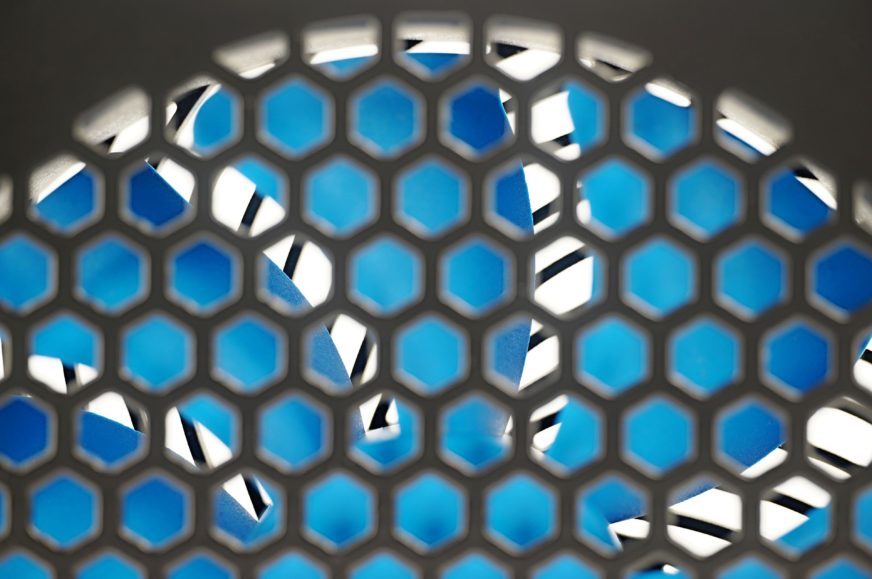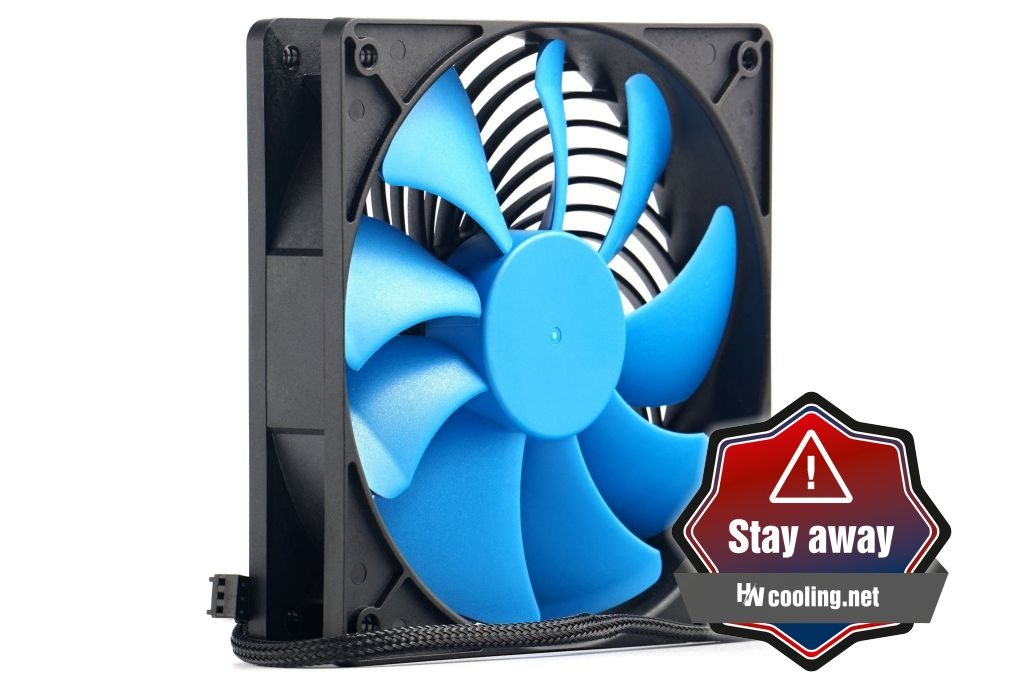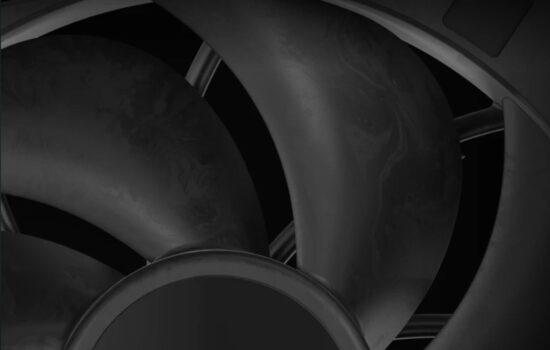Evaluation
A harsh headline, but a fair one. We always try to find mostly good things when testing, but sometimes it’s tricky. That’s the case here, where SilverStone is misleading its customers. The grille doesn’t significantly increase noise? We have no sympathy for hoaxes like this. Especially when it’s all “well thought out” and staged. Such practices do not shed a good light on the combination of three different blade shapes, which actually has something to it.
Evaluation
The SilverStone Air Penetrator 123 presents itself as a typical system fan – the aerodynamic grille behind the rotor and a restrictive hexagonal one in front of it are not meant to increase noise. On paper, then, these should be the optimal fans for the intake to the case. However, things aren’t quite so rosy with the SST-123, and SilverStone itself has unwisely done quite a bit of harm to these fans.
It’s time to dissect the promotional video in which SilverStone compares how the sound (or noise) changes after adding a hexagonal grille (a standard obstacle in PC cases that fans have to overcome) to the AP123 and Gentlee Typhoon. The viewer comes away from this video as a witness to the supernatural, as the SilverStone fan noise increase is minimal and the Typhoon’s increase is substantial. This is SilverStone’s way of saying that compared to another “more common” fan, it doesn’t create as much mechanical resistance, resulting in virtually no increase in noise levels at all. This is, of course, sheer nonsense, and SilverStone has achieved such an illusion by combining a number of factors that put the Gentle Typhoon at a disadvantage and, conversely, put the AP123 at an advantage.
First of all, the AP123 is a significantly slower fan with significantly less airflow. For this reason alone, the increase in noise after adding the grille is lower. But the main reason why the Typhoon is so much noisier is because with the higher airflow, it transmits significantly more vibrations to the frame. These are then transmitted to the grille structure, which is the source of the secondary noise (this is quite clear from the nature of the sound). We recently published an article on this topic Vibration: the parameter to which fan companies are turning a blind eye. So then, not because of a miracle rotor, but because of the significantly higher airflow and significantly higher vibration, the noise increase in the Typhoon is many times higher. It is also quite interesting that it is the Gentle Typhoon that has fallen victim to this comparison. Usually manufacturers avoid comparisons with specific fans, but when the AP123 was released, Scythe no longer claimed the Gentle Typhoon brand and Nidec Servo did not yet own it. So there was no threat of controversy here either, at the same time Typhoon was very popular. A perfect coincidence, of which SilverStone couldn’t resist the temptation and committed to a strange move that the ordinary user wouldn’t see through.
And the noise increase of the AP 123 with the grille is not even the lowest. While with this SilverStone fan, we measured an increase of 9.7 dBA (from 48.3 dBA), in the case of the SilentiumPC Sigma Pro Corona RGB 120 fan with a similar, though still slightly lower, baseline overall noise level (47 dBA), it’s only plus 7 dBA. The SilverStone’s own SST-AP121 has a very similar increase (10.3 dBA) from virtually the same noise level (48.6 dBA). If we didn’t use an “amp” on the noise meter for higher sensitivity, the difference would be borderline immeasurable even at maximum airflow. At lower airflow it would fade away and approach zero.
When used on a grille, the SilverStone SST-AP123 fan does not have any advantages that result from the atypical design of its rotor. However, the different blades have a significant impact on the fan’s acoustic performance. And this is always the case, with or without the grille. You can see several “hills” in the SST-AP123 sound spectrographs, with none significantly exceeding the others. More hills are related to a greater mix of different blades. Each produces a different hill, and in the end, none of them are so distinctive that you’re able to identify any particular sound that bothers you in the aerodynamics of the fan. The fan is quiet from the motor and bearings as well, although it’s not among the top of the line in that regard. There is a subtle growl (at frequencies around 1.8 kHz). This is so faint, however, that even demanding users may not be bothered by it, and most users won’t be able to hear it with their own ears from twenty centimetres away.
The rotor is well balanced, but at speeds around 250 rpm due to the nature of the turbulence there is more intense vibration. At higher, but also lower speeds, the vibrations are already quite low, almost negligible. This behaviour pattern is exhibited across several SST-AP123 samples, so it is not a piece by piece issue.
The main reason we recommend you avoid this fan is its unfavourable price/performance ratio and no added value – the bearings and accessories are below average in this price range. According to the specifications, the AP123 fan should have up to 61% more airflow than the AP121 at the same speed (and similar noise level). We can only confirm the information about noise, the airflow we measured in terms of maximum power for the AP123 was only 8% higher. In its most efficient setting, 36-39 dBA modes, the AP121 has a 22-23% higher airflow. On the grille, it’s 28-29% in this optimal speed range (850-1000 rpm), but even so, the AP123 doesn’t defend its price with this performance. The Noctua NF-P12 redux-1700 is better in virtually every way, and it’s half the price. Finally, there’s the question for what reason and in what environment the SST-AP123 might be a good choice. Apart from the very low start-up speeds from 100 rpm, I guess it could just be down to the unusual colour scheme with the deep blue rotor. Or can you think of anything else?
English translation and edit by Jozef Dudáš
| SilverStone SST-AP123 |
| + The sound is tuned to more pleasant frequencies than usual |
| + Wide speed range |
| + Very low speeds possible (stable from approx. 100 rpm) |
| + Decent build quality |
| - Single-purpose design |
| - Unfavourable price/value ratio |
| - Below-average efficiency at an above-average price |
| - Increased vibration around 1200 rpm. Can be damped by the supplied rubber grips |
| - Considering the higher price range, poor bearings, accessories and messy packaging |
| - Deliberate misrepresentation by SilverStone at the level of advertising materials |
| - And one more red line for the demagoguery around the grille |
| Approximate retail price: 25 EUR |
- Contents
- SilverStone SST-AP123 in detail
- The basis of the methodology, the wind tunnel
- Mounting and vibration measurement
- Initial warm-up and speed recording
- Base 7 equal noise levels…
- .. and sound color (frequency characteristic)
- Static pressure measurement…
- … and airflow
- Everything changes with obstacles
- How we measure power draw and motor power
- Measuring the intensity (and power draw) of lighting
- Results: Speed
- Results: Airflow w/o obstacles
- Results: Airflow through a nylon filter
- Results: Airflow through a plastic filter
- Results: Airflow through a hexagonal grille
- Results: Airflow through a thinner radiator
- Results: Airflow through a thicker radiator
- Results: Static pressure w/o obstacles
- Results: Static pressure through a nylon filter
- Results: Static pressure through a plastic filter
- Results: Static pressure through a hexagonal grille
- Results: Static pressure through a thinner radiator
- Results: Static pressure through a thicker radiator
- Results: Static pressure, efficiency by orientation
- Reality vs. specifications
- Results: Frequency response of sound w/o obstacles
- Results: Frequency response of sound with a dust filter
- Results: Frequency response of sound with a hexagonal grille
- Results: Frequency response of sound with a radiator
- Results: Vibration, in total (3D vector length)
- Results: Vibration, X-axis
- Results: Vibration, Y-axis
- Results: Vibration, Z-axis
- Results: Power draw (and motor power)
- Results: Cooling performance per watt, airflow
- Results: Cooling performance per watt, static pressure
- Airflow per euro
- Static pressure per euro
- Results: Lighting – LED luminance and power draw
- Results: LED to motor power draw ratio
- Evaluation












